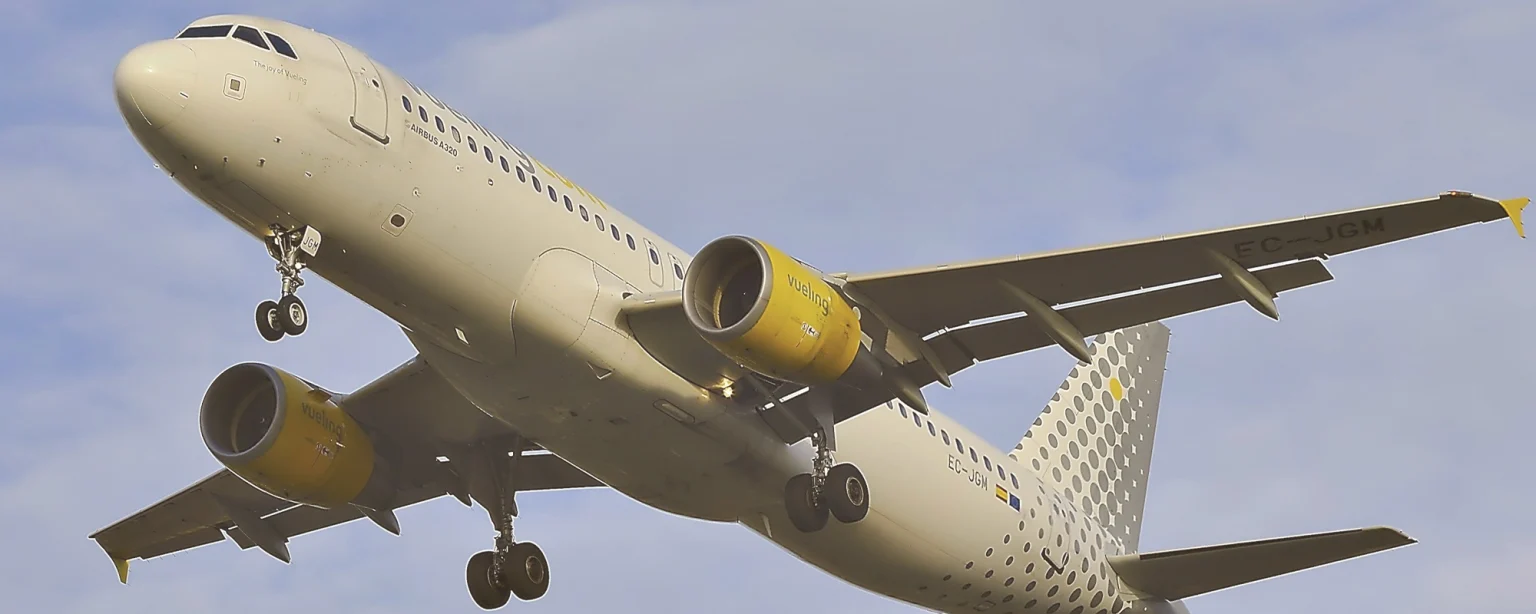The Spanish low-cost airline achieved this reduction compared to the figures from 2019, in a report that the company itself has prepared.

Vueling continues to work on strengthening its commitments to ESG and the environmental, social, and governance criteria with the goal of achieving net-zero emissions by 2050. According to data released in the recent report, Vueling has also managed to reduce onboard waste by 59% compared to 2019. The decarbonization objectives include a 10% reduction in CO2 emissions per passenger and kilometer by 2025 and, before 2050, using 10% sustainable fuel with a 20% reduction in net CO2 emissions.
Vueling, committed to ESG criteria
Regarding the use of sustainable aviation fuel (SAF), Vueling supplied 1,285 tons last year, which is four times its usage compared to 2022. This figure is part of the company’s strategy to promote sustainable fuel. At a time when it is crucial to adapt to the new sustainability criteria set by quality standards, airlines have committed to achieving the goal of net-zero emissions by 2050. This is a strategic collaboration involving airlines, airports, air navigation service providers, and manufacturers.
Net-zero emissions by 2050, a joint effort
The challenge facing the aviation market is extremely complex. The goal is to replace all types of fossil fuels with electric energy or hydrogen. Air traffic emits 2.5% of total CO2 emissions. The biggest obstacle facing the aviation industry is the lack of technology, which forces the search for alternative fuels that are sustainable. The most commonly used alternative today is SAF (Sustainable Aviation Fuel), derived from renewable raw materials and emitting up to 75% less CO2 from production to combustion.
The commitments for the use of SAF have been established through various goals. The blend of this fuel in the kerosene used by aircraft should be 2% by 2025, 5% by 2030, and 63% by 2050. Another challenge facing the aviation market is the production of SAF that can meet demand and reduce its cost, which is currently three to four times more expensive than kerosene. Along with this commitment to using SAF, there is another avenue: green hydrogen. This is a sustainable system but requires significant investment from airlines. The use of this type of propulsion necessitates new aircraft, infrastructure, and a new way of understanding airspace. While efforts are being made to develop green hydrogen, airlines have opted to make flights more efficient by reducing the weight of items such as dishes or food carts, improving operational efficiency, and optimizing routes. In short, aviation is undergoing a transformation to make its operations more sustainable while safely and responsibly connecting travelers to the most remote places on the planet.